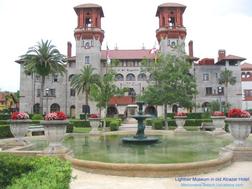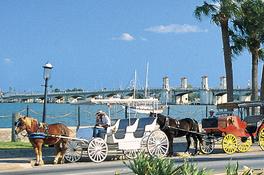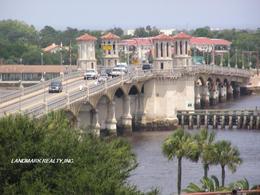St
THE CITY OF ST. AUGUSTINE IS THE NATION’S OLDEST PERMANENTLY OCCUPIED EUROPEAN SETTLEMENT, HAVING BEEN FOUNDED BY THE SPANISH IN 1565.




On Sept. 8. 1565, Don Pedro Menendez de Aviles came ashore and named a stretch of land near the inlet in honor of Augustine, a saint of the Roman Catholic Church on whose feast day – Aug. 28 – land was sighted.
Its scenery and history set this city apart from any other in the country. This small town has a quaint feel but boasts a big appeal. Visitors to the nation’s oldest city will surely see why when they walk the brick-lined streets, see the horse-drawn carriages, centuries-old buildings, impressive fort, and of course the bustling restaurants, attractions, shopping, art galleries, and more. Thousands of visitors make the trip to the Ancient City annually to enjoy all this town has to offer.
There are many things to do and see and we have compiled a complete visitor’s guide to help with planning each visitor’s vacation to our small town. St Augustine Florida boasts a huge variety of fun and FREE local events, as well as dozens of delicious and fresh restaurants, fun attractions, local hotels, shopping, tour services, and so much more! Visitors can plan their Florida vacation using Augustine.com. Our information is current and accurate, providing a clear description and address for every hotel, attraction, bed and breakfast inn, vacation rental, restaurant, shop and more.
St. Augustine in the late 1880s had its birth as a resort community with the arrival of Standard Oil co-founder Henry M. Flagler. He built two hotels and took over another to serve as the base of his Flagler System hotels. He founded the Florida East Coast Railway as a means of transporting guests to and from the north to his hotels in St. Augustine, Palm Beach, and Miami.
The heart of the city is its downtown Plaza de la Consitucion with most of the historic buildings located within a block or two of the Plaza, to the north and to the south. The Castillo de San Marcos, built of coquina by the Spanish in 1672, anchors the city’s north end of the bayfront. The Bridge of Lions, built in 1927, links the downtown with Davis Shores, a residential community dating back to the 1920s and St. Augustine Beach.
Today’s city has over 12,000* residents. It is the county seat of St. Johns County which has 170,000-plus residents.
